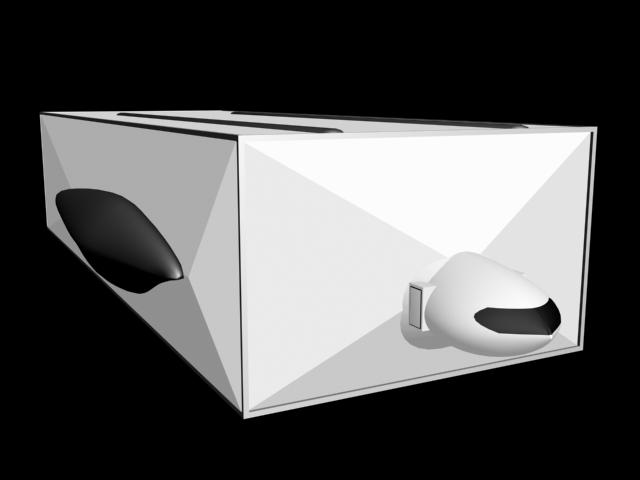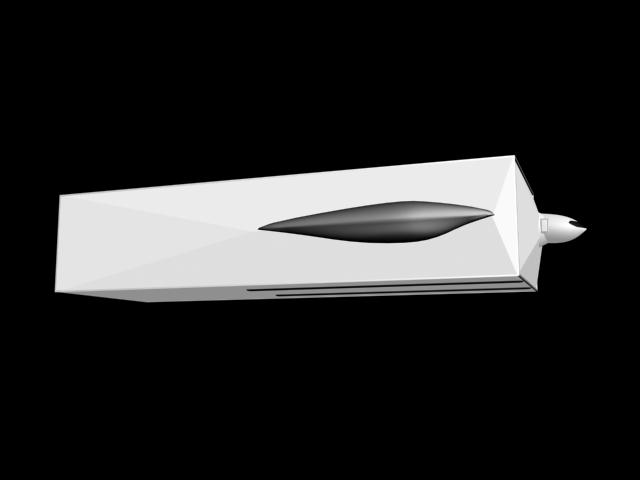Sidebar
Table of Contents
N series Medium Freighter
The PHI N series Medium Freighter provides a tailor-made solution for the shipping of industry-standard SSCC containers within and between star systems.

About the Ship
The N series is much like its smaller brother the K series, the biggest differences being the amount of containers it can carry and the addition of hyperspace fold capability. Variants range from the 128-container HDD to the 250-container JEE with little to distinguish them apart barring overall size; all N series utilise a the cabin design of the K series with more width and resulting interior space the only changes. The interior still comes in four different levels of luxury, ranging from the rather bland 'J' to the more comfortable and pleasing 'Q' and the series-standard high 'K' level; the last interior package is completely customer dictated and comes complete with gold 'Custom' badging on the exterior.
Key Features
Medium sized cargo area primarily designed to hold SSCC-XL containers.
Mission Specialization
General intra- and inter-system hauling of SSCC-XL containers or - in rarer cases - other cargo types.
Appearance
Moderate sized rectangular cargo area with combination CCD/HyperFold pods mounted on either side, with a rounded cabin attached to the fore.

History and Background
The N series Medium Freighter was designed by Posedeia Heavy Industries to fit into the role of providing mid-range haulage of SSCC-XL containers between star systems, a fairly typical scenario for civilian transportation interests. It's really as simple as that; if stuff needs truckin', best make a (bigger) truck.
Statistics and Performance
General
Class: Phi-YN-1a Type: Medium Freighter Designers: Posedeia Heavy Industries Manufacturer: Posedeia Heavy Industries Production: xxxx Fielded by: Civilian sector
Passengers
Crew: One pilot and one co-pilot, though the co-pilot is not required and their position often left vacant. Maximum Capacity: There is seating for only two persons, though there is a bed behind the seats (operations manual requires this to be vacated while the freighter is in motion) and a small amount of room in the access passages.
Cargo
HDD variant: 128 SSCC-XL containers (8 x 4 x 4 arrangement) JEE variant: 250 SSCC-XL containers (10 x 5 x 5 arrangement)
While there exist some third-party kits that can be used to convert the cargo area to house smaller containers or even loose cargo, this results in wasted space and is possibly hazardous and is not recommended by the manufacturer. Press releases indicate that PHI may be looking into offering similar kits in the future if the market demands it.
Dimensions
Length:
- HDD: 71.5 meters ( 234.6 feet)
- JEE: 86.6 meters ( 284.1 feet)
Width:
- HDD: 32 meters ( 105 feet)
- JEE: 37.4 meters ( 122.7 feet)
Height:
- HDD: 14.2 meters ( 46.6 feet)
- JEE: 17.4 meters ( 57.1 feet)
Decks: 1
Propulsion and Range
Sublight Engines: 0.125c Continuum Distortion Drive: 4,000c Hyper-Fold Drive: 0.25 ly/m Range: 11 days (recommended maximum) Lifespan: Roughly 20 years Refit Cycle: Routine service every 6 months, overhauls every 4 years
WARNING: While atmospheric flight (handles like a sloth) and leaving a planet is (barely) possible, re-entry into an atmosphere is not do to lack of thermal shielding. Attempting to enter a planetary atmosphere will void all manufacturer warranties (and will kill you).
Damage Capacity
- Hull: 5
Inside the Ship
Compartment Layouts
Cabin
The cabin is a simple affair; at its fore are two comfortable seats facing the controls and instrumentation panels with a wide storage surface between them. Immediately behind the seats and situated between two thin corridors on either side of the cabin is a small curtained area containing a simple bed for when other accommodation is not available. The two slightly angled corridors meet a slightly wider connecting corridor directly aft of the bed area and ends on either side of the cabin in small, simple airlocks. There are many storage areas situated around the cabin, some only small enough for a few documents while the largest can be used for hanging clothing or stowing packages etc.
Cargo Bay
Aft of the freighter's cabin is the container cargo area, a nearly entirely empty area barring evenly spaced structural supports and racking system. On the dock level (HDD: second from floor) there is a central pair of fore and aft roller tracks as well as several perpendicular tracks which are used to effortlessly move containers into position. Once the dock level is completely populated the containers are locked into place inside a rail cage which then either lowers or lifts into position to one of the other levels. Access is via a standard large-cargo-airlock sized opening at the aft, the sealable door of which slides sideways into the ship's aft walls (note: this is not an airlock, and opening in space will result in decompression of the cargo area).
Ship Systems
Computers and Electronics
N series freighters are fitted with simple but reliable civilian-grade navigation systems, useful for little more than getting from A to B and listening to music while you are at it.
Emergency Systems
The aft wall of each airlock contains lockers for a Spacesuit, a small amount of survival rations and fire fighting equipment.
Life Support Systems
The life support system is rather simple, being of a typical recirculation type that is recharged while attached to a station or in a suitable atmosphere. There is enough air for 2 people to survive roughly 3 weeks.
Propulsion
Page Tools
Terms of Service - Privacy Policy
